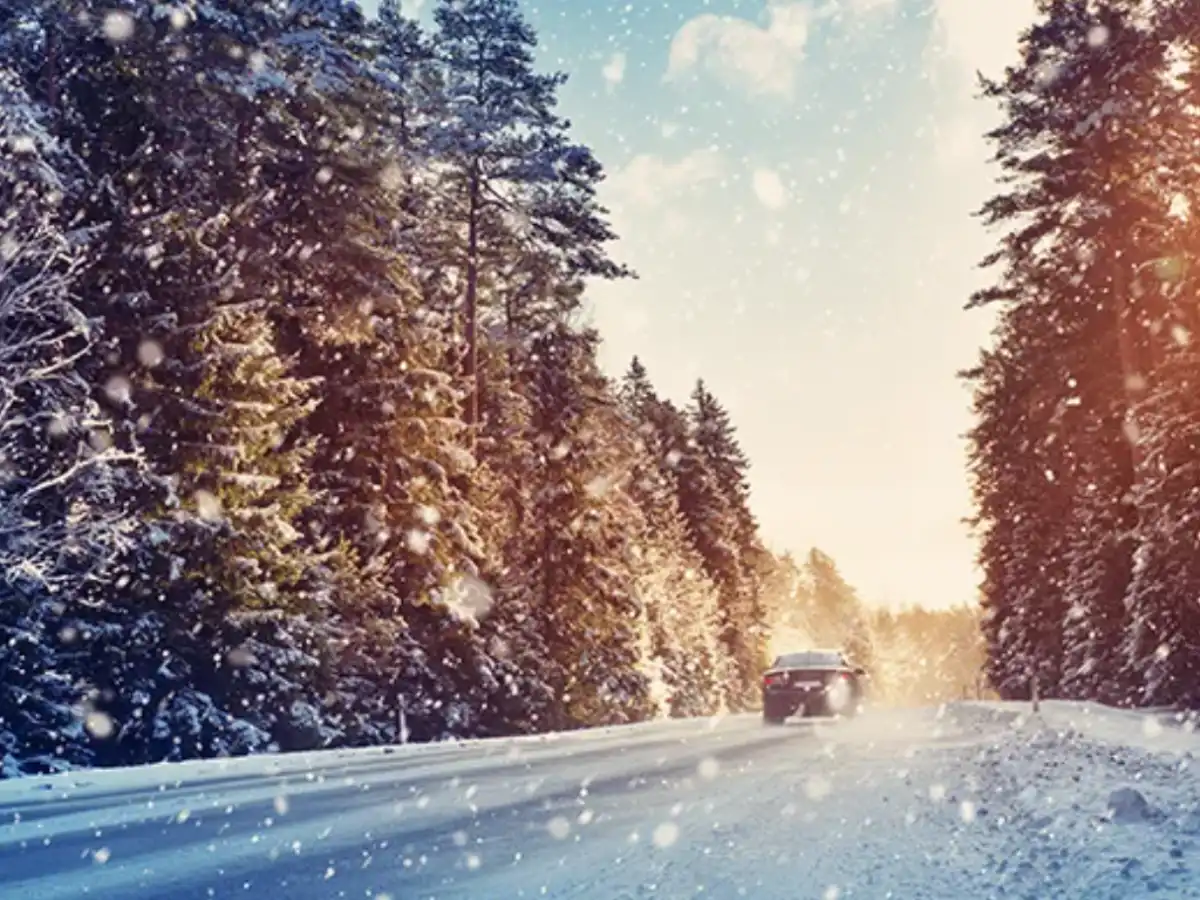States we serve: VA, MD, DC, PA, NC, SC, and WV
Stress-Free and Safe Holiday Travel
November 15, 2022 · 3 minute read · Personal Lines

Have questions?
Contact us today.
Please note: coverage cannot be bound or altered online. A service representative will need to contact you to finalize your request.
With the holiday season approaching, a road trip or two may be in your plans. Before your schedule gets too hectic with holiday preparations and celebrations, take some time to prepare your vehicle. Here are tips to help you enjoy stress-free and safe holiday travel this season.
Preparing Your Vehicle
Start preparing your vehicle now so you have time to take care of any issues or repairs.
- Inspect your windshield wipers. Some signs that indicate new wiper blades are in order include the following:
- The rubber is splitting into sections, looks worn or torn, or is pulling away from the metal arm.
- The metal arm is bent or cracked.
- The wipers make a chattering sound when they are on, rather than going smoothly back and forth across the windshield.
- When it rains or snows, the wipers leave streaks or a haze on the windshield.
- Have your vehicle serviced according to manufacturer recommendations. Check the antifreeze level.
- Keep the gas tank near full, which helps avoid ice in the fuel lines and the gas tank itself.
- Replace wiper fluid with a wintertime mixture.
- Make sure your tires are in good shape and have the proper air pressure.
- Check to confirm your battery has a good charge, your heater and defroster are working well, and your emergency lights are functional.
Emergency (and Non-Emergency) Supplies
Put together an emergency kit, or if you already have one, update and restock your emergency items. Some helpful items include:
- Jumper cables
- Flares
- Tool kit with pliers, screwdrivers, an adjustable wrench, pocket knife, etc.
- First-aid kit
- Flashlight and extra batteries
- Ice scraper (if you live in an area with snow)
- Gloves
- Warm clothes
- Appropriate footwear
- Blankets
- Snacks
- Bottled water
Once you have assembled these items, find a way to keep them together, such as in a cardboard box, storage bin, or backpack. Make sure the kit is easily accessible, not buried under luggage. Pre-packaged emergency kits are also available at major retailers or online.
Depending on where you are traveling and the weather forecast, you may want to consider packing a shovel, tire chains, and cat litter or sand (to provide traction if you get stuck in snow or ice). Bring a book to pass the time in the event you get stuck in traffic or stranded in bad weather.
Aside from emergency food and water, pack some snacks for the trip. This will save you the extra money it costs for food at a gas station and keep hunger pains at bay if you are delayed by traffic or weather. Pack a cell phone car charger, and make sure your phone is fully charged before you hit the road.
Travel Times and Routes
The day before Thanksgiving is typically the biggest travel day of the year. To avoid congestion on the roads, consider leaving earlier in the day, traveling at night, or leaving early on Thanksgiving Day. Prepare for the unexpected and allow plenty of time to get to your destination. If traffic or weather conditions make your regular route undesirable, how else can you get there? Consider a more scenic drive, though slightly longer. Find a few places to stop along the way to let everyone stretch their legs and get some fresh air.
Know Your Route
It’s important to be ready for anything on the road that could slightly change your plans. This could include adverse weather, construction, road closings, and traffic hurdles. Check the weather forecast and local travel advisories before leaving.
Driving During Stormy Weather
Even after doing your best to avoid traveling during bad weather, you may still find yourself on the road in adverse conditions. Take it slow if the roads are wet, snowy, or icy. Leave extra room between your vehicle and others on the road. Take extra care when passing through shady spots or over bridges and overpasses, as these areas are more prone to ice patches. While having four-wheel drive or all-wheel drive is helpful, it won’t help your vehicle stop or steer better on ice, so be careful no matter what features your vehicle has.
Staying Safe if Stranded
While no one wants to be stranded on the side of the road in a storm, it happens to thousands of people every year. If you end up stranded, here are a few tips for staying safe:
- If possible, pull completely off the road to a safe spot.
- Stay with your vehicle.
- Make sure the exterior exhaust of the car is clear of snow to prevent carbon monoxide buildup in the car. Continue to check this each time you turn the heater on.
- Turn on your hazard lights or place roadside flares near your vehicle so other drivers can see you.
- Keep your seat belt on.
Despite your best efforts in preparing ahead of time, you may still run into a variety of delays. Don’t let the stress of the situation get to you. Take some time to enjoy the new novel you brought along and relish in good conversation with your travel companions.
You Might Also Like . . .
12 Tips for a Stress-free Holiday
Avoid Becoming a Victim of Holiday Fraud
Protecting Your Home While You Are Away
References
https://www.roadtripamerica.com/travelplanning/Secrets-for-Surviving-Holiday-Road-Trips.htm
www.safeco.com
www.travelsense.org




